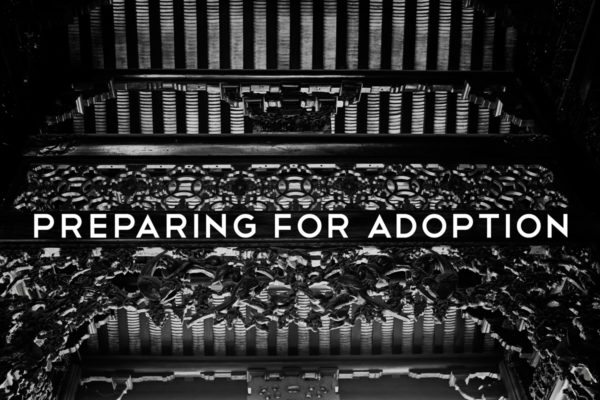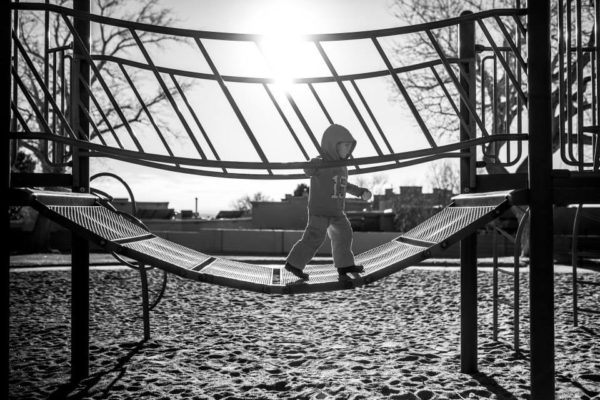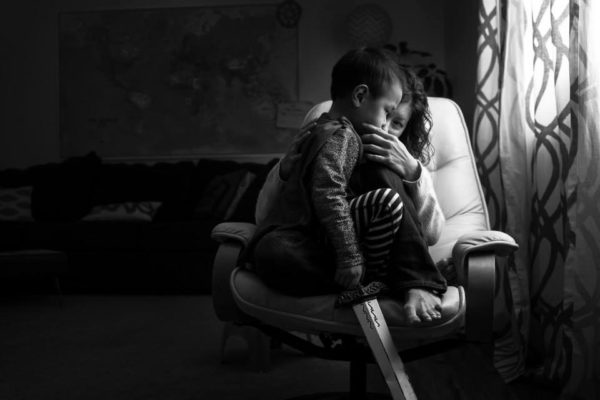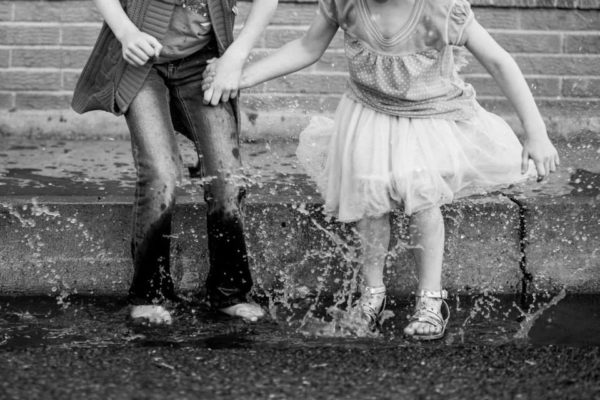You’ve dreamt for this day for months, years even. You’ve planned for it, are going to travel halfway around the world for it, and have played it out in your mind a million times. And yet, the reality of becoming a family through adoption is undoubtedly different. As we have focused on Preparing for Adoption, we asked you to submit real questions for real answers from people whose business is preparing families for adoption for life. We took those questions, narrowed them down to ten and asked a few of our friends to serve as a virtual panel to answer them in a two-part post… you can find post one – that covers questions 1 through 4 – here.

Question 4: We worked hard to prepare our family for it and now everyone is an anxious mess! Is there such thing as over-preparing? What’s the balance of preparing enough but not making everyone super anxious?
Answer from Angela Mains, Senior Family Therapist at Lifeline: I can only imagine the flood of feelings you are experiencing right now! A certain amount of anxiety is normal and is to be expected. Anxiety itself is not the concern or the enemy. When the anxiety reaches a level that crosses into an inability to think clearly, rest, trust, or in some other way impairs the ability for an individual to function, that is when it becomes a problem. Take a deep breath. Your family will take their cue from you as the adult/wife/husband/parent. It is okay to acknowledge your anxiety to yourself and those around you, take a deep breath, and then release it. This is a great opportunity to practice the letting go that you will have to do for the rest of your life. You can plan all that you can (and you should). However, there are many things that will happen that are outside of your plan. As with parenting, focus on flexibility within structure. Don’t allow your anxiety to make you rigid or unable to go with the flow. Be intentional in relaxing. Practice now being the thermostat for your family, not the thermometer. Don’t allow the emotional state of your children and those around you to dictate your own emotional state. Your children need you as this external modem to help them learn to regulate. This will only get more challenging, so practice it now. Don’t beat yourself up for how you feel; accept it and move forward. There are many awesome resources to help with relaxation. The simplest and easiest is to take deep breaths, or belly breathe. Belly breathing involves focusing on allowing your breath to go all the way down to your belly. When we get anxious, our breathing tends to get more shallow and stay in the chest area, which can increase our anxiety. Allowing our breath to go down to our belly button can help breathing to slow and increase feelings of calm. Elmo has a great song about this that you can use to teach this skill to younger children (and maybe us too!). Use the current anxious feelings as a teachable moment for your entire family. Talk about what might be making each person feel anxious. For example, “I’m afraid that we will forget something important.” Or for a child, maybe they are nervous about being in a different country. Encourage your kids to problem solve by thinking through the scenarios they are nervous about and asking what they think would help or what they might do if that situation did arise. This will help you to identify any irrational fears that have crept in that need to be addressed. Dr. Daniel Amen’s Captain Snout and the Super Power Questions is a great children’s book on identifying automatic negative thoughts (ANTs) that can help with this. The most important thing is to trust the Lord. He has brought you to this place and this moment for such a time as this. He will continue to be faithful in the days to come!

Question 5: We’re a two-income household. How much time should I plan to take off of work? How can I best prepare our child for full-time childcare/school?
Answer from Kelly Curry, Child & Family Therapist at Agape: I love this question and am always so grateful when families are being thoughtful about childcare plans prior to adoption. First of all, I get it. I get being a two-income household and doing the best you can to find quality and appropriate childcare for your child. I understand the struggle, worry, and anxiety that you feel not only while trying to choose a quality daycare/preschool but even after choosing, having to drop your little one off every day. I stand with you and truly understand the place of needing to work in order to support your family yet desiring to do the best for your child. With that being said, the amount of time you should plan to take off will vary greatly depending on your child’s age, history, personality, and temperament. When I make general recommendations for families prior to adoption, I advise to plan for at least 3-6 months (longer for older children). You can prepare your child for full-time childcare/school by doing several things. Here are a few suggestions: 1. Plan to be very consistent however you can, considering think like drop-off/pick-up times, and a daycare/preschool with consistent teachers. 2. Transition into care, beginning approximately 2 weeks before you return to work in order to implement a slow transition for your child into full-time care. 3. Practice attunement to your child’s needs, watching for how drop-off and pick-ups go, looking for warning signs that your child is struggling, etc. 4. Give your child a transitional object to take with him/her to daycare/preschool like a laminated picture of your family, a soft blanket that smells like you, or a special “lovey”. Answer from Kelly Raudenbush, Attachment therapist at Attachment & Bonding Center of PA and Codirector of The Sparrow Fund: We all so want a manual with rules on how to do this right, don’t we? We want the assurance that we’re doing the best for our children. There’s a lot of good in recommendations for taking x amount of time off work depending on the age of your child, etc. But, keep in mind that more time home isn’t always better — it can be, but not necessarily. If taking time away from work — often unpaid time off — weighs heavily on you or your spouse, it could actually make things harder in terms of attachment. As you are considering how to navigate time off and childcare/school entry, consider the needs of your whole family. Your child’s needs and emotional health are now best understood in the context of a family (Amen to that!). Consult professionals. Communicate with potential childcare providers and teachers. Wrestle with your concerns. In the end, trust that how you transition and come alongside your child through the new experience is more important and more impactful to your relationship than definitive, recommended dates on a calendar.

Question 6: It seems like we’ve heard a lot about disruptions lately in country and even once home. What are the best ways we can guard ourselves against disruption?
Answer from Kelly Curry, Child & Family Therapist at Agape: Disruptions do happen and are becoming a bit more frequent with the increase in older child and special needs adoptions, but they are still relatively rare. I say this only to give you a bit of hope and reassurance. With that being said, you do need to prepare and be proactive in ensuring that your risk for a disruption is as low as absolutely possible. Here are a few things that you can do to be proactive: 1. Educate yourself as much as possible. Educate yourself on topics such as adoption, attachment (including your own attachment style and history), trauma, your child’s specific needs and how your specific child’s history may influence behavior. 2. Obtain a pre-adoption medical review. Many international adoption clinics provide this service. Generally included is a complete and thorough review of your child’s records, a phone consultation/counseling session to discuss them, as well as on-call services for you to utilize in country. 3. Adjust your expectations. Often, I see families do best when they have very low (or no) expectations and prepare accordingly. 4. Set up a support network. Ensure that you have a strong and educated network of support. This should include friends and family who have been educated about adoption, attachment, and trauma. 5. Explore your own history. Adoption (and parenting in general) often triggers emotional blind spots in your own life. Consider meeting with an adoption and trauma competent therapist to explore your own history and attachment. 6. Pray and follow the Lord’s lead!

Question 7: What is the best way to greet a child on Family/Gotcha Day?
Answer from Kelly Raudenbush, Attachment therapist at Attachment & Bonding Center of PA and Codirector of The Sparrow Fund: I remember so clearly the moment we first saw our own daughter in a smoky civil affairs office in Xi’an, China. Our daughter was wide-eyed and silent. Some children are like her on the day they meet their new parents and are told they are leaving with them; others may scream and push away from you; others may shed quiet tears or smile and leave with you happily. It’s so hard to be fully prepared given the wide range of where your child could be. Their responses to big goodbyes and big changes can look so different. However your child responds to that moment, you can think through a few things. Videos of your first meeting can be significant tools for your child later as he or she processes his or her history, but you don’t want his or her first vision of you to be with a camera blocking your face. Consider a set up on the side to record it all, or try to hold your camera or phone away from your face or down so you capture the sounds and people but don’t cover your own face. Bring a few almost-always foolproof tools to engage with your child. Think stickers to play with and stick anywhere (your nose is perfect), little bubbles containers (party favor size so that if your child wants to hold it, you can say yes without fear of a big mess if/when it spills), and something snuggly like a little security blanket or (my favorite) a little weighted animal (even if your child is older). As parents are juggling their cameras and all their tools, they often forget what may be the most important tool of all — yourself. Be intentional to connect with the caregiver with your child. If the caregiver is special to your child, it’s a powerful opportunity to demonstrate to your child that you are safe and to start to build trust (i.e., “if this stranger is friends with my ayi, then he is safe.”). If the caregiver is not someone special to your child, connecting with him or her is still an opportunity to let your child see you being relational without being the focus of those efforts. While he or she likely cannot understand your words, your expression, tone, and body language towards the caregiver — and to each other — are powerful tools to send your new son or daughter the message that you’re safe and, no matter how scary it may be to leave with you, he or she will be safe too. Answer from Kelly Curry, Child & Family Therapist at Agape: The best advice I can give to families on how to greet their child on family day is to follow your child’s lead. I know that with all your preparation and education, you will be anxious to begin attaching and practicing therapeutic parenting. However, a big part of that is going to be attunement to your child, following his or her lead and increasing contact as your child feels more comfortable. Additionally, plan to have lots of snacks on hand and a few novel, simple toys.

Question 8: Are there things we should look for on Family/Gotcha Day? Are there suggested strategies for problem solving in country?
Answer from Kelly Curry, Child & Family Therapist at Agape: There are absolutely things you should look for on Family Day. One of the primary things I always counsel families to watch for are signs of grief (both in your child and in your child’s caregivers). Although difficult in the present, this is a helpful sign that your child may have had connections to previous caregivers. This not only will be helpful as you are beginning to store information for your child to have later on, but this will be helpful for your post-adoption team (therapists, social workers, etc.) as they counsel and guide your family. While in country, often you can feel very alone. I recommend having international adoption clinic specialists on call for you to offer support and guidance (for medical, physical, behavioral, and emotional needs). If you are able to develop a relationship with an adoption competent therapist prior to travel, I recommend having them on standby as well. Additionally, do not be afraid to utilize your agency. That’s a big part of why they are there.

Question 9: I understand that we should be prepared for our child to show defiance. How do we allow him to exert independence to cope without letting him run the house? When and how do we start to teach him to obey mom and dad and that we’re in charge?
Answer from Kelly Raudenbush, Attachment therapist at Attachment & Bonding Center of PA and Co-director of The Sparrow Fund: Your new child’s world has been turned upside down. You are right to expect to see defiance and challenging behavior as he faces that. As he does, he needs you to give him both nurture and structure. He needs compassion and warmth that help him to feel accepted. He also needs the safety that structure and boundaries give. Don’t be scared to offer correction and structure. Often parents see correction as something that will interrupt their attachment when it’s actually an opportunity to build deeper relationship. In those first days together in country, give your child and yourself a lot of grace. After all, you are dealing with a whole lot of new too. Follow your child’s lead. If he is more content out and about, go out. If he’s more content within the walls of your hotel room, stay put as much as you can. Tag team with your spouse and take breaks when you feel tension rising. Don’t put pressure on yourselves as parents to “get it all right.” It’s going to take a bit to get moving in the right direction. And, even when you are, they’re bound to be hiccups. That’s okay. Every rupture in the process is an opportunity too for repair and deeper connection. Once home and settling into your new normal, you can start practicing the tools and methods you learned about for correction. You don’t need to wait a designated amount of time first or wait for your child to learn more English. Show your child you’re a good mom and a good dad by showing him he can trust you, that you are in control, that he is safest when he’s under your protection and authority, and that you are able to and desire to meet his needs. You’ll feel more connected and empowered as mom and dad, and your child will take that in and move towards you as he does. If you need more resources about tools and methods for correction that build connection, see the Empowered to Connect website and consider reading The Connected Child and No Drama Discipline to start with. They aren’t the only good resources out there on the topic, but they’re good starting points. If you need more 1:1 help to figure out how to implement the tools given your own patterns and your child’s patterns, don’t wait to connect with an attachment professional who can give you some guidance and encouragement and help you get going on the right track.

Question 10: In your professional experience, what have you found to be the best predictors of a successful transition or outcome for an adoptive family?
Answer from Kelly Curry, Child & Family Therapist at Agape: In my professional experience, I have found preadoption education and expectations to be the best predictors of a successful transition or outcome for an adoptive family. Answer from Kelly Raudenbush, Attachment therapist at Attachment & Bonding Center of PA and Codirector of The Sparrow Fund: Preparing through education is important, but I am tempted to say that being in community is just as important. Intentionally pursuing relationships where you feel safe to share the hard stuff and celebrate good stuff can make all the difference. Along those same lines, if you ever feel stuck, a willingness to reach out for help can move a family from spiraling down to moving forward on a path towards healing. Answer from Heather Schuck, Family therapist at the UAB International Adoption Clinic at Children’s Hospital of Alabama: There are 3 predictors that I see in professional practice for an overall successful transition as a newly adoptive family. 1. Long hours invested in pre-adoption education are vital in preparing your parenting style and expectations for life together once home. 2. Post adoption education once you know those concerns specific to your newly adopted child is also critical. Revisit your training and look for new trainings, books, and community help as a resource for your specific situation. Not only is this a good refresher, but you will see the information through a different lens with your child in mind. 3. I’ve also found that parents who can openly process their own feelings, triggers, and history and examine the how, what, and why you are feeling personal impact (both positive and negative) by certain behaviors of your child can have great success in working through transitions that come with adoption. Answer from Angela Mains, Senior Family Therapist at Lifeline: One of the hardest aspects of my job is being involved in adoptive placements that end in dissolution. It is painful for everyone. With that said, we’ve seen those same children thrive when placed with other families. What makes the difference? In my opinion, attachment. Different children trigger different things in each of us. Many of the dissolutions I’ve been involved with had little to do with the child or the child’s behaviors. Their behaviors were mild. There are others where there are extreme behaviors. But overall, the parents’ attachment styles have had everything to do with how the placement goes. This is tough, as attachment is often hard to define and describe to people, and is often misunderstood in adoption circles. Simply put, attachment = interdependence. It is the ability to function independently, yet also to know how and when to be appropriately dependent. It means knowing how to handle stress when it comes and having a variety of tools through which to do it. It means having community around you, yet also knowing what to do when you find yourself alone to cope in healthy ways. I believe it also means understanding that while we may be physically alone and at a loss with what to do, we are never spiritually alone. It means knowing how to process difficult information, and not being afraid to feel and acknowledge hard feelings. Not all of us have had the privilege of growing up in homes where this was learned. The beauty is that this can be learned as an adult. Marriage is often a great place to find attachment healing, bringing us back to the question on marriage. Start this work now, being willing to take a hard look at your past relationships. Go to a therapist, read, journal, and ask God to bring awareness to the areas that need sifting and pruning. This isn’t a one and done occurrence, but will be an ongoing journey even once your child is home. Don’t be afraid of it. Embrace it!
If you haven’t already, be sure to read post one in which questions 1 through 4 are answered! – images by Tish Goff


























Leave a Reply